Acoustic sensors enable efficient and non-invasive monitoring of a wide range of species, including many that are difficult to monitor in other ways. Although they were initially limited in application scope largely due to cost and hardware constraints, the development of low-cost, open-source models like the Audiomoth in recent years has increased access immensely and opened up new avenues of research. For example, some teams are using them to identify illicit human activities through the detection of associated sounds, like gunshots, vehicles, or chainsaws (e.g. OpenEars).
With this relatively novel dimension of wildlife monitoring rapidly advancing in both marine and terrestrial systems, it is crucial that we identify and share information about the utility and constraints of these sensors to inform efforts. A recent study identified advancements in hardware and machine learning applications, as well as early development of acoustic biodiversity indicators, as factors facilitating progress in the field. In terms of limitations, the authors highlight insufficient reference sound libraries, a lack of open-source audio processing tools, and a need for standardization of survey and analysis protocols. They also stress the importance of collaboration in moving forward, which is precisely what this group will aim to facilitate.
If you're new to acoustic monitoring and want to get up to speed on the basics, check out these beginner's resources and conversations from across the WILDLABS platform:
Three Resources for Beginners:
- Listening to Nature: The Emerging Field of Bioacoustics, Adam Welz
- Ecoacoustics and Biodiversity Monitoring, RSEC Journal
- Monitoring Ecosystems through Sound: The Present and Future of Passive Acoustics, Ella Browning and Rory Gibb
Three Forum Threads for Beginners:
- AudioMoth user guide | Tessa Rhinehart
- Audiomoth and Natterjack Monitoring (UK) | Stuart Newson
- Help with analysing bat recordings from Audiomoth | Carlos Abrahams
Three Tutorials for Beginners:
- "How do I perform automated recordings of bird assemblages?" | Carlos Abrahams, Tech Tutors
- "How do I scale up acoustic surveys with Audiomoths and automated processing?" | Tessa Rhinehart, Tech Tutors
- Acoustic Monitoring | David Watson, Ruby Lee, Andy Hill, and Dimitri Ponirakis, Virtual Meetups
Want to know more about acoustic monitoring and learn from experts in the WILDLABS community? Jump into the discussion in our Acoustic Monitoring group!
Header image: Carly Batist
No showcases have been added to this group yet.
Ol Pejeta Conservancy
Endeavoring to implement tech solutions for conservation.



- 0 Resources
- 18 Discussions
- 11 Groups
Wildlife Drones
Wildlife Drones has developed the world’s most innovative radio animal-tracking system using drones so you can track your radio-tagged animals like never before.


- 18 Resources
- 8 Discussions
- 31 Groups
- @AndreaHerguedas
- | She/her
PhD student ~ acoustic stress response and behavior of sea turtle juveniles
- 0 Resources
- 0 Discussions
- 4 Groups
- 0 Resources
- 0 Discussions
- 9 Groups
- @tutgut5
- | she/her
- 0 Resources
- 7 Discussions
- 8 Groups
- @WLomas
- | She/they
Research Assistant and PhD student at the University of Wolverhampton (Conservation/AI/Bioacoustics)
- 0 Resources
- 1 Discussions
- 2 Groups
- 0 Resources
- 0 Discussions
- 3 Groups
- @pchwalek
- | He/him/his
I'm a PhD candidate in the Responsive Environments Group, working on electronic systems for human and wildlife monitoring.



- 0 Resources
- 18 Discussions
- 9 Groups
- @LauraKloepper
- | she/her
Associate Professor at the University of New Hampshire. Our research aims to uncover behavioral principles underlying acoustic sensing, inspire the design of active sensing technology, and improve population monitoring for animal conservation.

- 1 Resources
- 3 Discussions
- 5 Groups
- @reny.tyson.moore
- | She/Her/Hers
- 0 Resources
- 0 Discussions
- 4 Groups
finding ecological solutions using sound and conservation tech
- 0 Resources
- 0 Discussions
- 4 Groups
Currently a data scientist in industry working on mechanistic models of risk, previously worked on modeling coral reefs. I am interested in the potential for emerging technologies and new ideas to help us solve environmental crises.
- 0 Resources
- 0 Discussions
- 14 Groups
Do you have innovative #tech4wildlife ideas that could save one of the most endangered species on earth from extinction? Apply now to join Vaquita Hack, a hackathon for students and early career conservationists! This...
10 November 2020
Wildlife Acoustics is awarding up to $5,000 of product every quarter to grant recipients worldwide in order to enable those involved in animal biology, research, and conservation to do their best work easily and quickly...
6 November 2020
The Acoustic Monitoring community is one of the most active spaces on WILDLABS, and this particular aspect of conservation technology is rapidly growing, offering new ways to answer large-scale environmental questions...
28 October 2020
To celebrate the first Black Mammalogists Week (starting Sunday, September 13th), we talked to four of the amazing Black scientists behind this event! Find out what they had to say about their favorite (and most...
10 September 2020
Today, Sustainable Fishing Challenges group leader Daniel Steadman discusses how fishing gear itself could benefit from fresh technological innovations to prevent both environmental damage and damage to species and...
19 August 2020
Funding
Protecting elephants from conservation's most pressing issues like poaching and human-wildlife conflict requires big, bold, and innovative solutions. Hackster.io, Smart Parks, Edge Impulse, Microsoft, and several other...
11 August 2020
Put your acoustic monitoring skills to the test in The Cornell Lab of Ornithology's Birdsong Identification Kaggle Competition. Participants will compete to identify as many bird vocalizations as possible in in...
8 July 2020
Community Announcement
Our second WILDLABS Community Call took place on April 1st to continue the discussion started by Ben Tregenna in our Data Science group, in which he suggested the idea of submitting a collaborative entry to the X-Prize...
30 March 2020
Trapped inside during the COVID-19 quarantine and looking to engage with conservation science without leaving your desk? Citizen science projects like those on Zooniverse offer a great opportunity to impact scientific...
18 March 2020
Machine learning is rapidly expanding as a useful field research tool, but its complexity can intimidate even seasoned tech conservationists. Edge Impulse aims to make machine learning solutions accessible,...
16 March 2020
2020 marked our fifth year holding our annual #Tech4Wildlife Photo Challenge, and our community made it a milestone to remember. Conservationists took to Twitter last week to share their best high-tech snapshots from...
4 March 2020
Researchers are increasingly placing microphones in forests and other ecosystems to monitor birds, insects, frogs, and other animals. As the technology advances and becomes less costly, proponents argue, bioacoustics is...
24 February 2020
August 2025
event
September 2025
event
October 2025
November 2025
event
April 2024
event
64 Products
Recently updated products
| Description | Activity | Replies | Groups | Updated |
|---|---|---|---|---|
| Hi cosmicspittle, Many thanks for the pointer, I shall discusss it with our local tech disussion group here tomorrow morning. One of the guy's, the PhD candidate... |
|
Acoustics | 4 years 10 months ago | |
| Hi Wildlabbers, We've got a fascinating paper to show you, as shared with us by Claude Miaud. This study looks at how amphibian... |
|
Acoustics | 4 years 11 months ago | |
| I thought this article might be interesting to people in this group: "It’s common knowledge that bats navigate and search for... |
|
Acoustics | 4 years 11 months ago | |
| Hello to you all, I hope everyone is doing ok during this Covid-19 contingency. Jsut sharing this adaptation for the water proof case for the Audio Moth. https://www.... |
+2
|
Acoustics | 5 years ago | |
| Johnnie, Great. You can get me at work on c.abrahams@bakerconsultants.co.uk Ta, Carlos |
|
Acoustics | 5 years 1 month ago | |
| Hi everyone, Thanks for attending today's episode! You can find all of the collaborative notes at the link below, and we also encourage you to use this thread to connect... |
|
Acoustics | 5 years 1 month ago | |
| Hi everyone, If anyone is looking for the episode's collaborative notes, you can find them here: https://notes.datawrapper.de/p/Tech_Tutors_Episode_3 This doc... |
|
Acoustics | 5 years 1 month ago | |
| Hi all, There is a conversation underway in the "Ethics of conservation tech" group on best practices for responsible ue of... |
|
Acoustics | 5 years 2 months ago | |
| How do we get notified for the next group buy? |
|
Acoustics | 5 years 2 months ago | |
| Hello all, I am new to recording but have been learning about acousting environmental monitoring for several years now. Covid19 has me... |
|
Acoustics | 5 years 2 months ago | |
| Hi Isla, Range at which animals hear sounds depend on 4 things: 1) the frequency (pitch) of the sound of interest. As a rule of thumb, lower frequency sounds travel... |
|
Acoustics | 5 years 3 months ago | |
| We used the following lithium batteries. URL: https://fortebattery.en.made-in-china.com/product/FBDEubqyfGhH/China-C-Size-Lithium-Batteries-Cr26500-Cr26500se-... |
|
Acoustics | 5 years 3 months ago |
Tutorial: Train a TinyML Model That Can Recognize Sounds Using Only 23 kB of RAM
16 March 2020 12:00am
Success recording bees using AudioMoth
7 July 2019 6:45pm
#Tech4Wildlife 2020 Photo Challenge In Review
4 March 2020 12:00am
Listening to Nature: The Emerging Field of Bioacoustics
24 February 2020 12:00am
Workshop: Using Bioacoustics for Field Survey
 CIEEM
CIEEM
20 February 2020 12:00am
ICEI2020: 11th International Conference on Ecological Informatics
 ICEI 2020
ICEI 2020
14 February 2020 12:00am
WILDLABS Virtual Meetup Recording: Acoustic Monitoring
5 February 2020 12:00am
Acoustic Telemetry Workshop Series
 Ocean Tracking Network
Ocean Tracking Network
19 December 2019 12:00am
Machine-readable representation of a sensor duty cycle / recording schedule
11 September 2019 8:13pm
12 September 2019 5:27pm
Hi David,
I use cron-like patterns. One form looks something like: mon,wed-sun 0-23:0-59/10 90
which means every day but Tuesdays, every 10 minutes from the top of the hour, recording for 90 seconds. There is a similar form for matching by month/day. There could be yet another form for sunrise/sunset but I haven't implemented that. Basically a hyphen indicates a range, a comma indicates a list, and the slash is repetition step size. A full recording specification consists of one or more patterns, the first matching being used (for the recording duration). Years are not implemented but that could be done also.
Thanks,
-harold
Advice on Audiomoth extended power and case solution
3 September 2019 5:56pm
6 September 2019 11:21am
Hi Shawn,
I might be concerned about the Li-ion batteries, if there is any chance of losing a node (damage due to installation, weather, animals, or theft) then the economics won't work out, it being such a large proportion of the cost. Also it's kind of a pain flying with them even if they're quite light because they have to go in carry-on luggage.
I'm not insensitive to the e-waste issue, but here I think even here alkaline might have the upper hand: many lithium cells contain toxic cobalt (as opposed to manganese) and it's not often clear which type you have. Alkalines OTOH are relatively innocuous (unless they contain mercury, which they should not in this day and age): carbon anode, steel casing, zinc cathode, zinc oxide (used in baby nappy rash cream), lye, manganese oxide/dioxide (occurs naturally as an ore but you still don't want to eat it).
Thanks,
-harold
6 September 2019 5:29pm
Many thanks Harold!
I really appreciate the information on e-waste! What about going with LiFePo4 batteries? They are consider low toxicity and I know they are a type of battery that our chemistry department will take to recycle (they will also take lipo and li-ion). I am trying to figure out how to calculate battery life in the Audiomoth if I were to go with a higher voltage LiFePo4 but less mAh, say 6.6 volt and 2100/3000 mAh. Any suggestions? and of course thoughts on this option? These batteries are cheaper too ($11-15)!
I've worked a lot with lipo and li-ion batteries building drones and other power solutions so I'm not really worried about damaging them or transporting them. It's amazing how many huge lipo's I've had in my carry-on luggage and all they care about is my laptop! My main concern with alkaline is that they are expensive in Ecuador with no where to dispose of for recyling (yet or that I currently know of). Rechargeables make sense because of the long-life and they can be muled back to the university for recyling with the chemistry department (I have no idea what they do with them, they just want them and say they will be recycled).
Shawn
7 September 2019 12:33am
Hi Shawn,
I've only heard good things about LiFePO4. The only issue I can think of is exactly the one you bring up: the EMF is low enough that a 2S battery is needed. The Audiomoth uses a linear voltage regulator, so anything in excess of the 3.3V that is actually used is wasted. This means for endurance calculations you consider only the mAH rating given you have chosen a battery that will output at least 3.3V (plus a bit more for the dropout). So 2100mAH at 6.6V is just 2100mAH, compared with 5000mAH of your initial Li-ion.
A high-effiency switching regulator may make sense if you're running the Audiomoth at high duty, but even so finding a low power unit is hard. But since reliability is paramount, I would go with something with the fewest moving parts.
Thanks,
-harold
Audio analysis of flocks or swarms
1 July 2019 3:57pm
9 July 2019 1:00am
Hi Andrew,
I'm not a signals guy I'm afraid, but I was thinking perhaps one way might be to estimate the physical size of the flock/swarm by scanning with a microphone array.
BTW do you find it a problem if an individual happens to be too close and drowns out the rest? In part it's a question of dynamic range but also of sensor placement.
Thanks,
-harold
21 August 2019 3:38pm
So far we have been able to disambiguate between the flocks of two different species of small birds? Not easy. Our problem seems to be based around the fact that some or all flocks of small birds cheeping sound pretty similar? Of course the issue is: at what point is asynchronous sound aggregation just noise?
With regards to individual sounds, we are not interested in individuals at the moment so have not tested for it. I suspect however that in the interests of completeness we will be?
More anon,
Andrew.
Raspberry Pi Hardware Mono Mic Problem
4 June 2019 3:47pm
24 July 2019 5:26pm
We've had good results with two mono inputs accepted via the stereo 1/4" input jack on the Pisound HAT on a 3B+ and just about to test with the 4. Details and links to Pisound folks in Lithuania here -- http://www.orcasound.net/2018/04/27/orcasounds-new-live-audio-solution-from-hydrophone-to-headphone-with-a-raspberry-pi-computer-and-hls-dash-streaming-software/
26 July 2019 9:50pm
Hey Scott,
Thanks for the advice, it is greatly appreciated. That's a very interesting project as well! I will have a read through it all in detail.
Sam
21 August 2019 3:22pm
Hi Sam,
have you tried the Clippy EM172 ? I was looking at this microphone on Raspberry Pi + PiSound, but it has an electret capsule and should then be powered...
Thank you !
Sound Event Recognition - through collaboration
28 June 2017 9:13pm
10 April 2018 2:19pm
no, you didn't miss it. We don't share it with the general public. Only with serious partners ;-)
9 July 2019 9:42pm
@jankees,
Hi I am working on a system to reduce Human Elephant Conflict and am interested in acoustics of Elephants and the identification of elephants through their acoustic signature to assist with this project, did you get anywhere with the serval sensor for detecting Elephants?
We are a non profit called the Forgotten Parks Foundation and currently managing the Upemba and Kundelungu National Parks in the DR.Congo and have an immediate requirement to reduce HEC so we would like to assist with the development of such a system.
10 July 2019 7:15am
Hi Kev,
thank you for contacting us. We are a non-profit, too. I very much welcome collabortion on this system. Shall we continue our discussion through email? Mine is jankees.schakel@sensingclues.org.
Looking forward to discussing this further,
Jan Kees
Technology lab focused on wildlife protection opens on Ol Pejeta Conservancy
31 May 2019 12:00am
WILDLABS TECH HUB Showcase
17 May 2019 12:00am
Meet the WILDLABS TECH HUB Winners
13 May 2019 12:00am
Bird Bioacoustics - Good Practice Guidance
11 April 2019 9:42pm
WILDLABS Virtual Meetup: Low Cost, Open-Source Solutions
18 March 2019 12:00am
AudioMoth 2.0 Development
17 March 2019 2:44am
AudioMoth user guide
27 February 2019 9:35pm
14 March 2019 10:08am
That also sounds like a good idea :)
14 March 2019 1:52pm
Hi again,
I agree; it's very important that everyone is able to contribute to the guide. Thanks for taking the lead on that, Akiba. To that end, I just made my GitHub repo publicly editable, so please feel free to add to it if you want to use a GitHub repository.
However, a Google Doc would be much easier for the general public to contribute to. If you choose that route instead, please use whatever you want from my repository. :-)
I personally like to use the guide as a single document instead of a Wiki. It's easier to read through, and since everything is on the same page, you can just CTRL+F to find a specific word or section. Also, it's helpful to be able to download it as a .pdf, or print it out and refer to it in the field.
Tessa
14 March 2019 3:43pm
Hi Tessa.
Thanks and also thanks for being so generous with your work :)
Regarding the format, how do you all think if we have a single document and a wiki? I could handle the single document if David wanted to do the wiki. One potential issue would be synchronization, but since many wikis keep a change list, perhaps we can schedule periodic document updates based on the wiki changelists. We can also maintain a document changelist in case the changes need to go in the other direction.
Any comments or suggestions?
Akiba
Advice for an in-situ Audio-Visual system for recording at a nest site
9 February 2019 6:19pm
25 February 2019 6:37pm
Hello Carlos and Sam
That book on "CCTV for Wildlife Monitoring" looks excellent. Although it is somewhat off at a tangent of my actual work this looks way too useful not to have. There are cheaper second-hand copies on Abebooks and eBay and also on sale at NHBS, £20.98 incl. UK P&P (https://www.nhbs.com/cctv-for-wildlife-monitoring-book).
An interesting interview with the author, Susan Young: https://blog.nhbs.com/author-interviews/interview/cctv-for-wildlife-monitoring-an-interview-with-susan-young/
Meanwhile, I have come across a research project by the author of that book using technology that looks very close to what Sam is trying to do: "CCTV Enables the Discovery of New Barbastelle Vocalisations and Activity Patterns Near a Roost - We monitored a barbastelle maternity roost for four months using a portable CCTV system, time synchronised with ultrasound recorders."
See more here: https://www.researchgate.net/project/Using-CCTV-to-link-vocal-repertoire-with-behaviour-in-bats
If the above does not do it, I think you should contact the author and get her advice on what would be a suitable setup for you. That's what I meant in my earlier post about maximising use of previously developed solutions. It will just save you a lot of messing about, especially if you are not a technical expert yourself.
I hope this is of some use. Do post an update when you have worked out what equipment to use.
Good luck,
Joachim Neff
6 March 2019 7:42pm
Hello Sam
I have now received the book on "CCTV for Wildlife Monitoring" (see my earlier post for more details) and it is as excellent as it looked online. If you can spare £21 then I would suggest you get a copy yourself.
The book is written for those without much technical background and the case studies are very detailed with equipment lists and setup details. I have not read the entire book but as far as I can see there are no examples described specifically with synced audio. However, all the case studies and detailed comments on what to watch out for (pun intended) should give you a lot of help in working out what you need for your project.
Good luck,
Joachim
8 March 2019 2:44pm
Joachim and Carlos,
Thank you both very much for all your help so far with this problem, all of your input is very constructive. I have had look into the CCTV tech and also that researchgate link, and both have provided me with a few more options. At the moment I am organising a visit to one of the "hackerspaces" near me, to see if anyone can give me some hands-on practical advice, mainly about a suitable power supply solution (as lots of inputs running and recording continuously will reduce the time it can be in-field substantially based upon a standard, small size power supply, as I understand it). I will let you both know when I have managed to develop a prototype, but this may take a month or two as I need to first order a starter kit for Raspberry Pi or Arduino, get my head around the basics, and also contend with my other work. I will be sure to let you all know if I make any headway!
Best wishes,
Sam
#Tech4Wildlife Photo Challenge: Our Favourites from 2019
3 March 2019 12:00am
Real-time audio monitoring
19 February 2019 10:42am
22 February 2019 2:33pm
Hi,
What you're asking, is it conceptually like turning on the mic on your PC and doing something with the output from the sound card? Instead of digitising the sound it's possible to do some kind of monitoring in the analogue domain. It sounds like an interesting problem, tell me more!
Thanks.
1 March 2019 8:17am
What frequecy are you looking to record, how long does the mic need to run for, what is the distance between the microphone and the "listening" site? As (unless I've missed something) an off the shelf radio microphone does exactly that job.
Bioacoustics for Ecologists: Hardware, Survey Design and Data Analysis
 PR Statistics
PR Statistics
25 February 2019 12:00am
AudioMoth - Big data software?
26 September 2018 12:02pm
24 October 2018 5:55pm
AH, okay. Yes, if something goes wrong writing to the SD card during a recording, the file won't be closed, and so the file size won't be updated. Let us know if you get any zero length files in †he future since it shouldn't happend. We have another release of the firmware and configuration app coming out in a couple of weeks that makes the routine which writes to the SD card a bit more robust if something goes wrong, uses human readible long file names, and also adds local time to both the configuration app and the resulting time stamps. Alex
21 December 2018 10:55pm
Hi David,
Kate Jones suggested trying our their Bat Classifier tool - deep learning tools for bat acoustic signal detection. We've quite a few members here who worked on it if you've got questions (@Rory_Gibb, @snewson, @robin_freeman as a start)
We have a method for finding bat calls that is super quick, free and all code is open source https://t.co/52FPZHLyQU
— Kate Jones (@ProfKateJones) December 21, 2018
Steph
22 February 2019 1:28pm
How about using Kaleidoscope and the cluster analysis tool? Works fine, and is super-quick..
Ta, Carlos
UK Southwest bat conference
15 January 2019 9:21am
22 February 2019 12:43pm
I'll be there - on the Wildlife Acoustics stand...
Please come and say hi!
Carlos
AudioMoth v1.1 is now available
23 January 2019 12:37pm
6 February 2019 3:58pm
Quick update
This audiomoth group purchase is now 581% funded. To meet with demand and component stock, if they reach 1500 devices they will close this round early and start to manufacture. A new round additional round will be opened at the same time in this eventuality.
As of this morning, this means htere are 338 devices left if you want to be included in this manufacturing run of the updated Audiomoth (v1.1).
18 February 2019 5:15pm
Update
The current AudioMoth group purchase reached our stock level of 1550 devices, hence the campaign has closed early. We'll now set up the manufacturing run and update you shortly on our progress.
Postulates of Soundscape Ecology
18 February 2019 9:35am
Can anyone recommend speakers for playback of primate calls?
10 February 2019 9:01pm
SODA Suite -An endeavour to assimilate global soundscapes on a cloud platform.
2 February 2019 6:09am
4 February 2019 4:01pm
Thanks! We also just posted info on the AVISONA 2019 event to the resources page for anyone who missed it and wants to learn more.








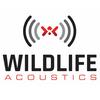















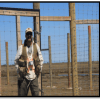





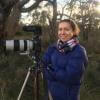



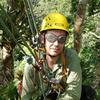



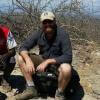








11 March 2020 11:16am
How can we learn more about your BEESWAX7 buzz identification and counting program, and discuss working together?